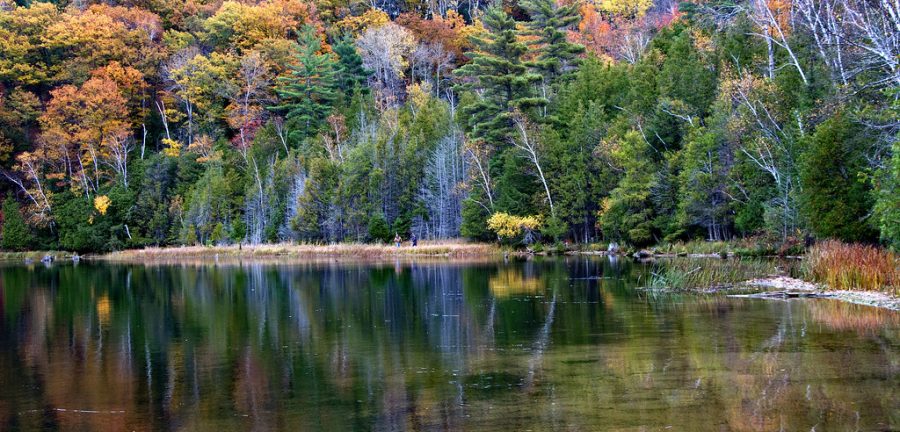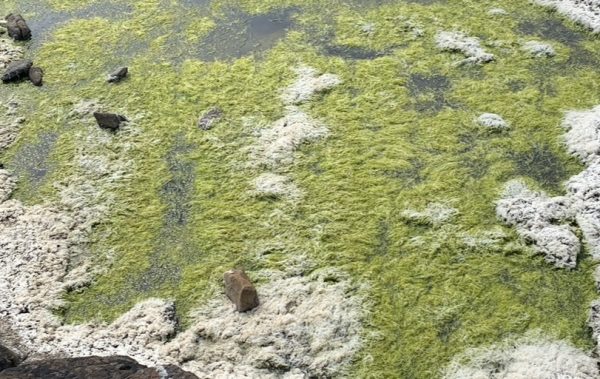Blue is Too Mainstream for U.S. Rivers
Ksblack99 via Creative Commons
The river above has most likely turned green over time because of the amount of algae it contains.
Jan 1, 2021
In the United States, over one-third of rivers have changed colors varying from blue, green, brown and yellow. Although these changes may sound harmless, they are in fact damaging to the ecosystem, causing health problems to humans and animals in places like Florida.
Over the course of 34 years, 15 million satellite images of rivers were taken by a group of researchers from the University of Pittsburgh, North Carolina, Colorado State, National Aeronautics and Space Administration and the United States Geological Survey’s Landsat program. From the 15 million photographs, about 235,000 images were selected to be heavily analyzed. The researchers looked into the sediments and algae found in the rivers in these states.
From the images, 56 percent of them were yellow and 38 percent of them were dominantly green. The reason for the change in color was the amount of sediment, algae and organic carbon water.
One of the researchers, Dr. John Gardner from the University of Pittsburgh, stated that one of the reasons a green river might turn yellow is due to urbanization, increase in river flow and agriculture which can result in less nutrients and light for algae. An increase in sediments caused by the erosion of soil and human activities can also turn a river yellow.
Dr. Tamlin Pavelsky is not certain on what makes a river turn green. He believes that it could be due to the transport of less sediment or an increase in algae according to some of the images of the United States rivers. Both Dr. Gardner and Pavelsky are wary of announcing whether or not the changes of the river color will affect human health.
Dr. Pavelsky said the change in river colors can cause an increase in algal growth. This can lead to the algae turning into harmful algal and producing toxins that are dangerous to humans, animals and environments.
One of the states that have seen first hand what an algae bloom can cause is Florida. In Biscayne Bay, there have been dozens of species of animals that have turned up dead and fish are struggling to breath. The reason for this dead wildlife is the low dissolved oxygen levels caused by an excess of nutrient pollution which in turn creates fairly conditions for algal to grow. Miami-Dade County and the City of Miami have been pumping oxygen into the water, but due to the vast amounts of algae dying, the oxygen is used up quickly.
When I heard about what the algae blooms were causing it was devastating, but I think the city of Miami should be making more of an effort to remove algae instead of trying to just pump more oxygen since they are inevitably feeding the algae.
— freshman Gabriela Blanco
Since researchers were only measuring the color of the rivers, they contacted climate scientists to see if they could link the color change to global warming. Dr. Michael E. Mann, American climatologist, stated that “agricultural fertilization” can cause a rise in harmful algal blooms that can turn river water green, yellow and even red.
Rivers are not the only body of water affected by algal blooms. In Florida, an algal bloom known as the red tide is found in bays and estuaries instead of freshwater systems. The Florida red tide caused many of its residents to experience symptoms of respiratory irritation such as coughing and sneezing.
“I do not live near Biscayne Bay, but I remember seeing images of all of the fish that died due to the red tide back in 2020. Most of the images showed the fish on the shoreline and I could not help thinking about how it could have been prevented,” freshman Rosibel Garcia said.
New studies about rivers are always occurring since algal can evolve and plants are always growing. Scientists and researchers are unsure if rivers changing color will affect human health and make sure to be kept up-to-date about your local freshwater systems. Your local news station like CBS Miami should have information depending on where you are located.
























